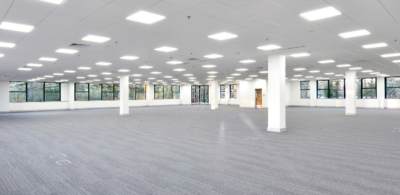Is a law firm profitable because it provides top-notch service to clients? Or is a law firm able to provide top-notch client service because it is profitable—able to invest in top talent, office resources and amenities that all contribute to serving clients more effectively?
There’s no right or wrong answer. The real question is how to increase both profits and service in a rapidly changing world. At Colliers, we’ve tapped our experts to address how office space can contribute to profits through maximized service by examining how law firms are rethinking design, configuration and usage of space.
Turn cost into profit
Like any business, law firms strive to increase revenue and minimize costs. In our studies, we have seen that many successful businesses have boosted their bottom lines by taking something traditionally viewed only as a cost and turning it into a profit center—or at least a profit enabler.
Of course, we’re hardly the first to point out the logic behind this strategy.
As far back as the early 1980s, Tom Peters, a management consultant and co-author of the iconic business book, In Search of Excellence, began studying highly successful companies. He looked at companies like Disney and FedEx who invested significantly in customer service and became more profitable as a result. Instead of treating customer service as an expense to be minimized, they treated it as an opportunity to attract and retain customers, which greatly enhanced their bottom lines.
Today, law firms are benefitting by doing something similar. Instead of approaching office space as a cost of doing business—based on location, square footage and rental rates—they’re rethinking and redesigning their spaces as environments that better serve the needs and expectations of both clients and employees.
As discussed in Law Firm Trends by Mancini Duffy, such environments foster activities and levels of performance that generate more revenue for the firm. According to the ABA Journal, firms such as Morrison & Foerster, Paul Hastings and Proskauer Rose have incorporated hospitality-influenced design to infuse branding and functionality into daytime business functions as well as hosted entertainment in the evening.
Is a law office like the Model T?
Like the automobile, the premise behind the design and purpose of the law office hasn’t changed much in more than a century. The classic law office design is hierarchical: large corner offices for senior partners, mid-sized windowed offices for not-so-senior partners and smaller windowed or interior offices for associates and support staff.
The assumption has long been that this layout meets client expectations about the kind of space their lawyers should have as well as the primary expectation and desire of employees who want to advance within the firm’s hierarchy. We’re learning that the expectations of clients and today’s new “net generation” of lawyers are changing significantly. It’s the younger generation who does the bulk of the revenue-generating work. As such, law firms that understand how to design, configure and use office space to meet their specific expectations are able to become more consistently profitable than those that don’t.
Now, consider the automobile. Technology and style aside, the basic design and purpose of the automobile hasn’t really changed since the Model T. The primary consumer expectation, then and now, was that it get them from Point A to Point B. But there’s a fundamental change brewing in the auto industry: the development of self-driven vehicles.
As the understanding of what automobiles can do changes, consumer expectations will change accordingly. They will expect cars to let them do all the things they can do when they don’t have to drive: relax, work, surf the web, hold video chats, read and so on. The fundamental design of automobile interiors will have to change as well. Instead of passengers facing forward, the new vehicle interior will likely allow them to face each other to talk, or sit back and stretch out. Like airplanes, there may be fold-out tables they can use for laptops or books. It’s a huge market opportunity that nearly every automaker is chasing now, lest they be left behind.
In Part Two of our series on this topic, we’ll discuss how law firms are updating their workplace strategies to accommodate the evolution of user expectations.
Also: Read Part Two | Read Part Three
As president of National Office Services for Colliers, Cynthia Foster leads our national office platform across multiple service lines, including capital markets, tenant representation, leasing agency, property management and valuation.

 Colliers Insights Team
Colliers Insights Team
 Aaron Jodka
Aaron Jodka
 Amber Merrigan
Amber Merrigan
 Andrew Steele
Andrew Steele